A Pinoy Priest in the Jungle
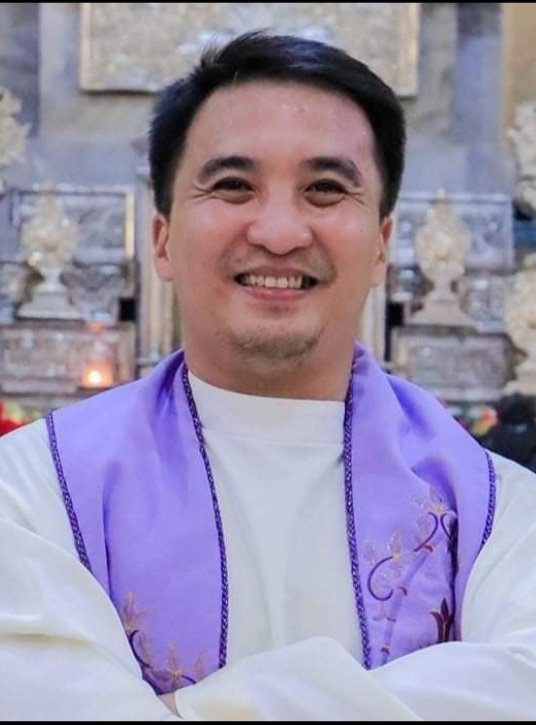
A recent photo of Fr. Allan Jacinto (Photo courtesy of Fr. Allan Jacinto)
The Augustinian Recollects came with Miguel Lopez de Legazpi, a history that Fr. Allan wanted to be a part of. He wrote to the Provincial Fr. Larlar to volunteer for mission assignment even before ordination. Impatiently he waited for any assignment while he cooled his heels in Palawan for seven months. It looked like Palawan was going to be a cake walk. Then Fr. Allan got word he was going to Africa.
Whoa! The headlines blared atrocities committed by the Lord’s Resistance Army’s leader Joseph Kony in Uganda. Was he going to spread the gospel on indoctrinated children brandishing AK-47s?
But God had other plans. In June 2008, Fr. Allan was told he was bound for the Amazon in Brazil. Somehow, only “Brazil” registered. And thoughts of beaches and party towns drowned out “Amazon.”
He didn’t even realize how far he was going. In August, he flew out of Manila to Hong Kong, then Amsterdam via KLM and on to Sao Paulo. That took 24 hours, but he had five more getting to Manaus, the largest and capital city of Amazonas. He then traveled by boat into the interior for four more hours.
The Amazon is within the territories of Colombia, Venezuela, Peru, and Brazil. But Amazonas is the state and the biggest part, which belongs to Brazil. Large parts of the Amazon are still unexplored. As late as 2008, the Brazilian Indian Protection Foundation released photos of a previously undiscovered tribe.
Fr. Allan’s destination was the Prelatura de Labrea. He was assigned in Tapaua town center. For three months, he studied Brazilian Portuguese in the mornings, then would be free to visit the mall in the afternoon.

Some members of a multi-generational family in the distant and isolated area of Tapua, Amazonas where Fr. Allan Jacinto celebrated Mass (Photo courtesy of Fr. Allan Jacinto)
There was no newspaper. There was only one bank, and the ATM was usually out of cash after a week. There was also a post office and always, a long line of teachers, government employees and other workers claiming their pay. The Centro Esperanza school was funded by Spain, Germany, and the UK.
He settled into a routine, along with his fellow Recoleto priests. At 6:00 a.m. they woke up to pray then went on their separate ways.
One would go to the vocational school. The Pastoral would remain to do housekeeping. Fr. Allan would go to the radio station – the only one in Tapaua.
Six missionaries (three Recoletos and three nuns) would visit the 20,000 cabocas (natives) in their communities as part of their duties. Aside from Fr. Allan, there were a Spaniard, a Brazilian, a Chilean, and an African.
Their missionary assignment into the interior was, of course, their priority. Like in the Gospel, the brancos (the priests) bedded down for the night at a caboca house and ate with them. This would mean a staple of farina(powdered wheat or cream of rice cereal), when mixed with meat becomes farapa or fried rice (looks like Indonesian nase goreng) and majoka (“kinayod na” [grated] cassava). Where he was, supplies ran out fast in the few stores. Chicken went quick, so they defaulted to fish for protein. Fr. Allan says the matrinxas is caught mainly during high tide. It’s “pricey and bigger than lapu-lapu (grouper).”
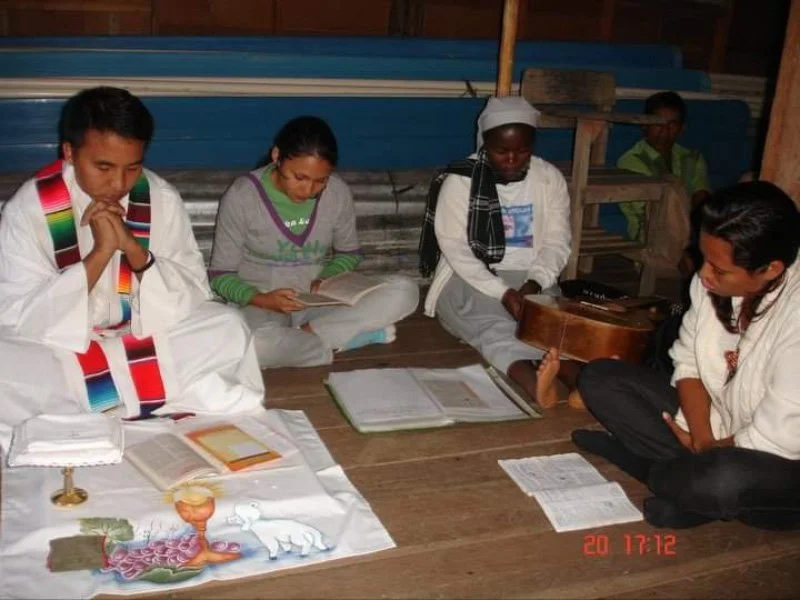
This is how we do it: Fr. Allan Jacinto (left) celebrates the eucharist at a caboca home with Sis. Felicienne (3rd from left) and two catechists. (Photo courtesy of Fr. Allan Jacinto)
All priests spoke fluent Portuguese to be able to do immersion with the cabocas for three months.
When Fr. Allan got his bearings, he observed his new surroundings. “In terms of surface area, parang tuldok lang ang Palawan (Palawan is like a period compared with the Amazon jungle.) Humidity is high. Normal temperature is about 35 to 40 degrees Celsius (about 95 to 104 degrees Fahrenheit). If you don’t get used to it, you’ll get sick. You can even get hepatitis from the food.”
But he did go native. “When you feel very hot, you expect a thunderstorm in the afternoon. Lightning strikes can kill you there. One time, the radio tower was struck down, I felt the house shake then the telephones were out. By the afternoon, some children were found dead. This usually happened when the river tide does not rise.
“Imagine this: the church is on top of a hill. When the river rises, it reaches the town and you can’t see the surrounding hills. Floods come in May and continue through October. You can only travel by motorboat (“the natives have longer boats than the Thais’”) across the expanse of tree tops. That’s why many of the inhabitants have two houses: one on land and a floating house on the river. Depending on the weather, people fish or farm.”
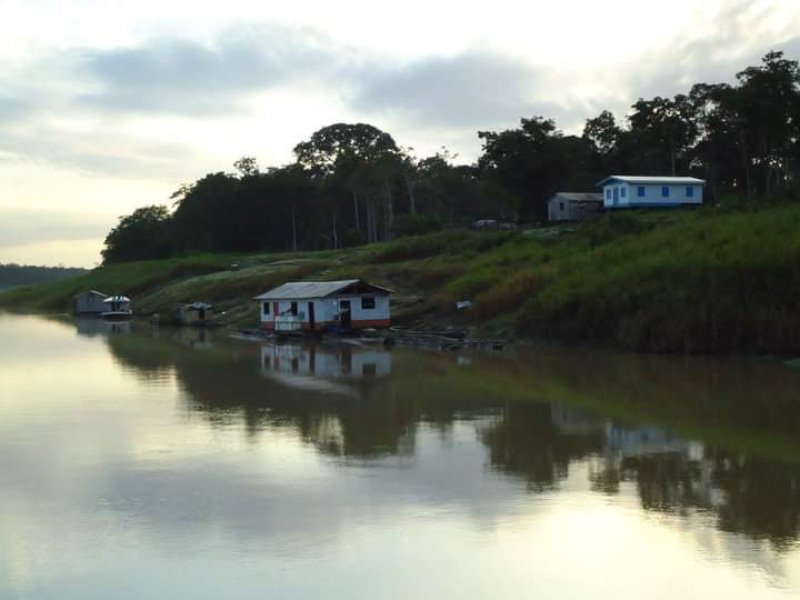
Locals who live along the Amazon maintain both a boat house and a house on the ground for both low- and high-tide. (Photo courtesy of Fr. Allan Jacinto)
Helicopters are usually called in only in times of emergencies. Regular floods in the Amazon don’t fall into this category.
Slowly, images of volleyball and beaches faded. In hindsight, Fr. Allan thinks he could have taken his chances facing a kid with a Kalashnikov on full auto than with some of the denizens of the Amazon.
The cabocas called them “piun.” “It’s hard to see them but when they swarm, they look like dark smoke in the sky. Any time of the year, they fly from 6 a.m. to 6 p.m. Their bite is painful. Mosquito repellent only holds them off for 30 seconds. So, people just wear hats and shirts despite the heat. You just bear the heat.”
“Some would allow the bites, wear them like a badge of courage. Until the pain makes you want to cry. The bite leaves a red mark that turns dark. The insects are carriers of black malaria which is lethal.
“Then at 6 p.m. came the carapana. These are like two-inch mosquitoes, almost like dragonflies. The natives set up mosquito nets with strong insecticide by 6 p.m. But if I did that, I couldn’t sleep.”
Fr. Allan and his fellow Recoletos lived in a boathouse along the river. “We close the windows when we sleep because it’s actually cooler. And there are creatures, not insects anymore, coming from the jungle. We once came across a hole as big as a drum where an anaconda had passed through.”
“In the evening, there are fierce wild boars. Cows are killed by leopards and panthers. And there are disease-carrying bats which could cause an outbreak.” Most homes have double-barreled shotguns set up because of this.
“There are no crocodiles in the river. But there are more dangerous fish that forced us to bathe in groups. The small candiru (toothpick or vampire fish) enters your orifices and attacks your intestines. Once they’re in, you die in less than an hour. They enter wounds, mouth, ears, any opening in the body. We have pulled out many priests from the river who died because of candiru.
“Piranhas are common. The fishermen throw them back into the river. They taste like tilapia and you can make sinigang with piranhas. Tasty, so long as you don’t think about what they eat. There’s sampalok (tamarind) and star fruit (kamias) so you can make sinigang.
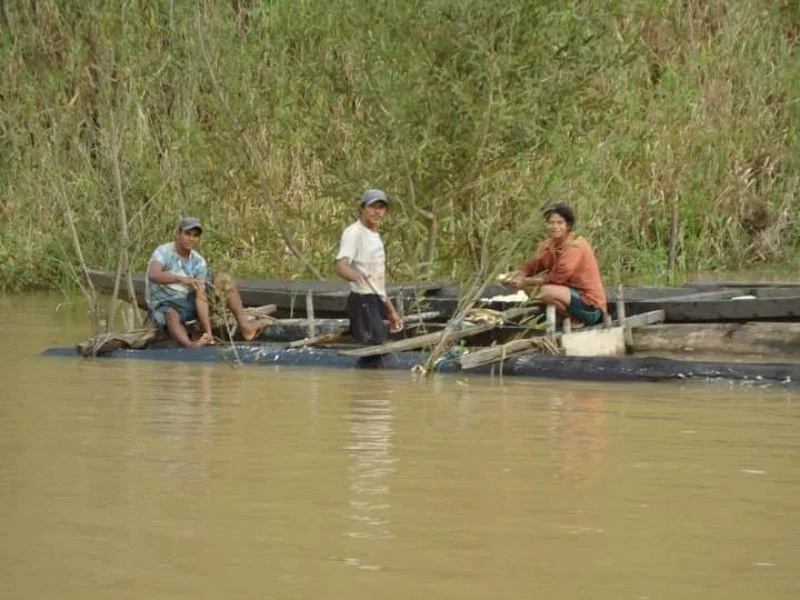
Many of the natives were fishermen who braved a river where piranha, vampire fish, anaconda and other fierce creatures live. (Photo courtesy of Fr. Allan Jacinto)
“There are also pythons, but the people don’t eat snakes. They do eat turtles. It is a delicacy when there’s a celebration. But the animal is considered endangered, and you can’t partake unless you’re a native. Turtles make terrific afritada.”
In the morning, people warm up a pot to shoo away the remaining piun. “But this attracts another fly-like insect. It looks like it has a shell on its back. When it bites, it’s double the pain from a piun bite. I got bitten and it became swollen like from a bee sting. They usually disappear by night. So, most people would forgo warming a pot and bear the piun.
In that part of the world, there were no electric grids, internet and wi-fi until 2011; Fr. Allan had landed in 2008. The convenience of electricity lasted for 30 minutes daily because power distribution was rolled to other communities.
Even potable water is rationed in town. “In the parish, we dug up a well and put a motor on it. But again, we had to use it sparingly. They don’t seem to understand this and run the motor for 24 hours.” Otherwise, the natives forgo purifiers and drink the disease-laden river water because “it tastes better.”
They have diesel-powered generators. “But normally, a month’s budget would be used up in a week. They don’t have enough gas to go to the bigger town and get government-supplied fuel. There’s corruption, so the money doesn’t trickle down.
“The cabocas are usually happy to see us (in our boathouse) because we have our own generator and have some fuel to spare. But we can’t give away precious fuel because we need it for our missions into the interior.”
The cabocas presented another challenge. “They have no birth control. Their law doesn’t allow you to interfere with natives, unless you are invited. There are a lot of kids who don’t know their fathers. In a family, the mothers have different sexual partners. They have no role models.”
The Recoletos started teaching the kids about the sacraments. “We rely on a handful of women in monogamous relationships to be our catechists. It’s a delicate situation because the mentality we’re trying to teach them is different from that of their culture.”
Fr. Allan relates the time a youth pointed out a partner from a fresh sexual bout in an alley. “That’s why their population is large. At one time Brazil had the highest rate of Catholic population in the whole world. After ten years, it went down. When I arrived, there were already different Christian evangelists and some cultists mixed in.”
When Fr. Allan arrived, he was the sixth Filipino priest. “They started sending Pinoy priests in the 1990s. The natives thought I was Japanese. They were welcoming and hospitable. They were somewhat wary of Latinos, but they were amazed at how far Asians came from.”
Filipinos were mostly seamen or tourists in Sao Paulo and Rio de Janeiro. There were also some Chinese and Japanese.

Part of the community that Fr. Allan Jacinto ministered along the Rio Purus, a tributary of the Amazon in Brazil (Photo courtesy of Fr. Allan Jacinto)
After Brazil, Fr. Allan studied Missiology at the Pontifica Universita Urbania in Rome from 2011-2014. But before that, he stopped over for a few days at a Recoletos halfway house in Milpitas, California where he regaled the Filipino faithful about life in the Amazonas.
After Rome, he was assigned as resident professor-formator at the Recoletos School of Theology in Quezon City. He visited Guam for pastoral aid in 2015. Now 44, he is currently a member of the St. Ezekiel Moreno Provincial Curia in Quezon City.
For Fr. Allan, his Amazonas experience was both a physical and spiritual test. “I believe every opportunity to serve the Church in whatever possible way is an incomparable experience. Given the chance to go back and work in the Prelatura de Labrea, Amazonas, Brazil, I would accept it with open arms.
“Change? I guess it’s a personal thing. I would come back as a more determined missionary – physically, mentally, emotionally, and spiritually – because being there requires a wholistic understanding of mission.”
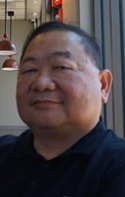
Harvey Barkin is editor-in-chief at FilAm Star in San Francisco, correspondent for the San Jose Mercury News and content writer for an industry-specific newsletter. He is also a reporting fellow for campaigns and grant-funded projects. Previously, he was a correspondent for news portal BenitoLink, a tech writer for Silicon Valley start-ups and a book reviewer for Small Press in Rhode Island. His work has appeared in various media from advertising copy and collateral to B2B content and in various outlets from Valley Catholic to Inside Kungfu.
More articles from Harvey I. Barkin






No comments:
Post a Comment